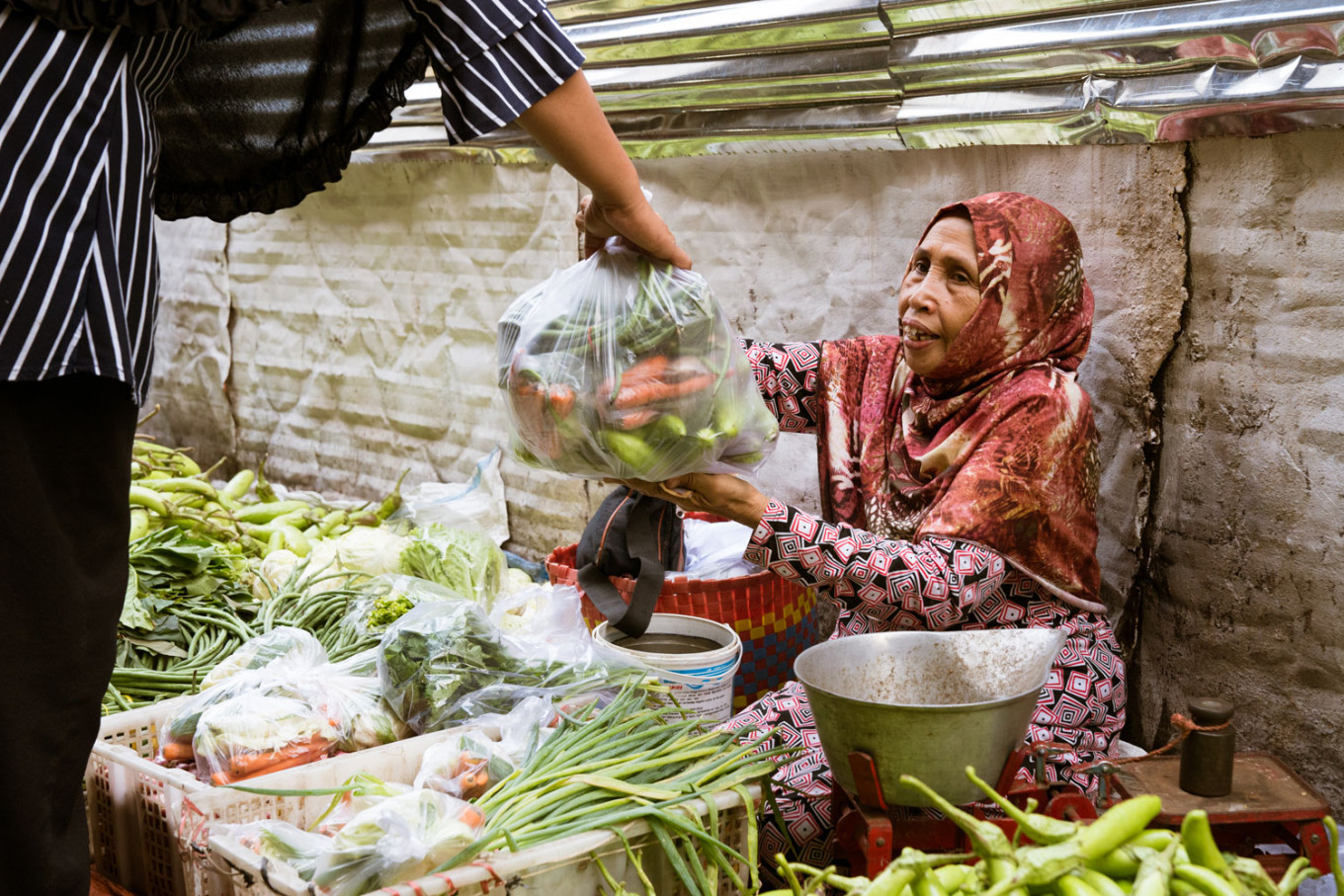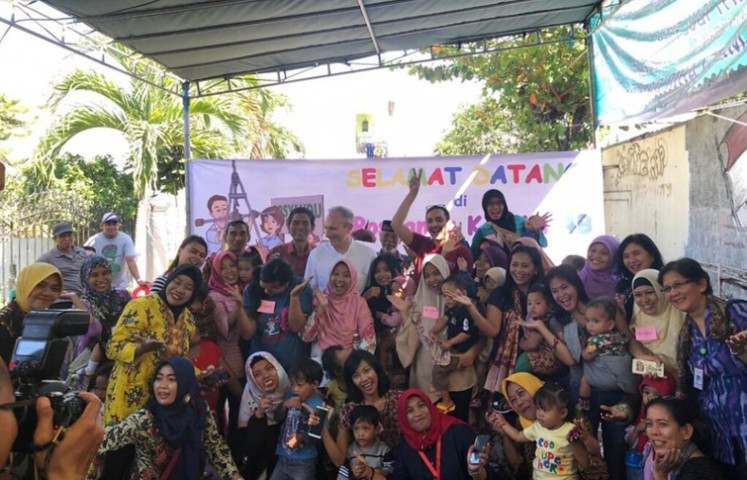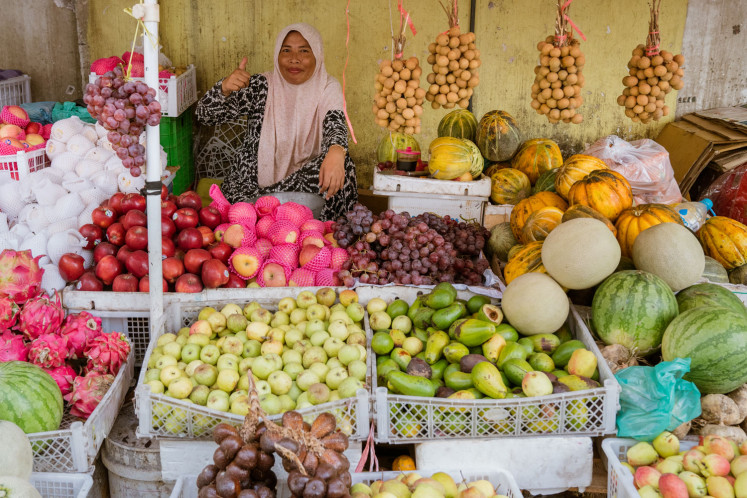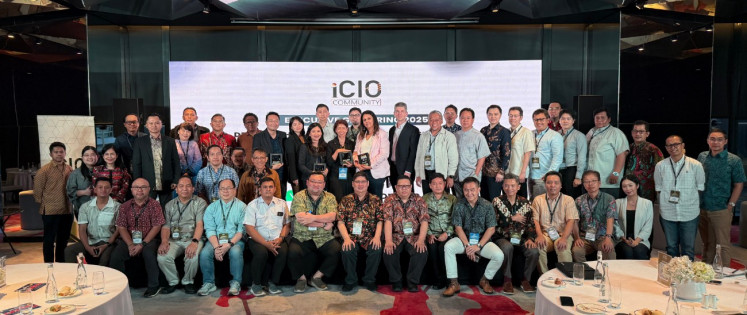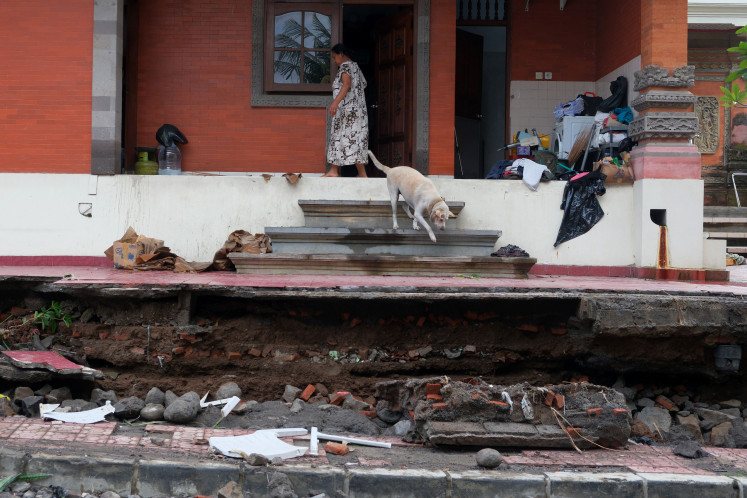Popular Reads
Top Results
Can't find what you're looking for?
View all search resultsPopular Reads
Top Results
Can't find what you're looking for?
View all search resultsTackling COVID-19 pandemic, hunger and malnutrition should be done simultaneously
Change text size
Gift Premium Articles
to Anyone
W
hile massive efforts are under way to cope with the COVID-19 pandemic, governments across the globe are reminded that the pandemic has led to global humanitarian crisis: rising hunger and malnutrition.
The impacts of the COVID-19 pandemic on hunger and malnutrition has caused deep concern among nutrition experts, especially because most governments are apt to focus more on tackling the pandemic and neglecting the issue of hunger and malnutrition.
“I think it is really important for governments all over the world not to separate these issues. When you deal with COVID-19, you should also deal with hunger and malnutrition. You must bring these issues together,” said Lawrence Haddad, executive director of the Global Alliance for Improved Nutrition (GAIN) in a virtual interview with The Jakarta Post from London recently.
According to Haddad, the COVID-19 pandemic has disrupted the food system, as indicated by the increasing amount of foods unable to reach the market; job losses as many companies have stopped operation; and disruption in the health system as most hospitals are challenged in coping with people exhibiting symptoms of COVID-19.
Haddad says hunger and malnutrition have been impacted as more people are unable to access staple foods properly and fresh foods with high nutritional content. Besides, children, young mothers and pregnant women also lack access to nutrition-related treatment services.
The latest data shows that the number of people suffering from hunger is expected to reach 780 million globally in the next 18 months, compared to the current 690 million.
“FAO projected, even without COVID-19, there will be 840 million people suffering from hunger by 2030,” Haddad says.
The pandemic has affected not only children but also pregnant women, who will birth malnourished infants and contribute to the cycle of stunting.
Globally, the numbers of wasted and stunted children are expected to increase by 9 million and 2 million respectively in the next two years, wiping out declines of previous years.
“This is a big problem for the youngest children in these vulnerable groups. If we don’t address malnutrition in the first two years of life, the children will carry that burden with them forever as it is partly irreversible,” he says.
Given the serious threat of malnutrition brought about by the COVID-19 pandemic, urgent and constant efforts have to be made to tackle it with the existing large-scale staple food fortification (LSFF) program highly recommended globally.
Haddad says that staple food fortification is one of the most cost-effective large-scale programs to combat malnutrition as micronutrients such as zinc, iodine and iron are added to rice, wheat, cooking oil and other kinds of staple foods people consume daily without changing taste, smell and look.
Explaining how food fortification benefits consumers, he says fortification with iron can help achieve a significant reduction in iron-deficiency anaemia.
“Cooking oil fortified with vitamin A significantly reduces vitamin A deficiency – a leading cause of child blindness and mortality,” he says.
Zinc fortification of flour has been shown to improve zinc status and has strong potential to reduce associated risks of diarrhoea, stunting, and preterm birth, he says.
Haddad explains further that large-scale food fortification “is particularly important in a time of pandemic, as micronutrient deficiencies can impact the ability of the body’s immune system to fight off the co-morbidities that increase the impact of COVID infections,” he says.
Indonesia currently mandates the fortification of salt with iodine and cooking oil with vitamin A. The mandatory fortification of wheat flour with Fe Fumarate will be enacted in August 2021.
Haddad says the Indonesian government supports fortification and has included fortification as a priority intervention in its 2020 – 2024 Development Plan.
“Indonesia has been a leader in the field of fortification but could build on this to reap even more benefits from fortification,” he points out.
For example, he says, salt could be fortified with iron in addition to iodine. Studies have shown that double fortification of salt (iodine and iron) in Uttar Pradesh, India, managed to reduce iron deficiency in women of reproductive age by 23 percent with regular consumption, at only an additional cost of US$ 0.07/kg.
He advises that social protection programs, in which Indonesia has taken the lead, could also enable beneficiaries to get fortified foods and fresh foods to meet their nutrition need, in addition to supporting income.
Challenges
Haddad says many countries face challenges with fortification quality in products that are unpackaged or unbranded, especially oil and salt. Transitioning away from bulk staples or taking other steps to ensure that bulk products can be traced to the producer can help to ensure accountability and fortification quality
“Contexts where food staples are processed by many small or medium-sized producers rather than a few large producers can present challenges with capacity and quality assurance,” he says.
“For example, a feasibility study in Indonesia in 2015 indicated that the potential of rice fortification in Indonesia is limited by the large number of millers. Currently there are more than one hundred thousand rice millers in Indonesia. Biofortification –breeding crops for higher nutrients using conventional selection methods--might be the answer to this challenge,” he says.
According to Haddad, factors that enable LSFF to work effectively in Indonesia include a multi-stakeholder approach involving parties from diverse sectors.
“Inclusive public-private sector engagement is crucial to build a resilient food system including high-quality fortification,” he says.
He adds that advocacy and education efforts are important, so that duty bearers understand the importance and benefits of LSFF in the midst of and post-pandemic, as a cost-effective program to complement diversified diets as a strategy to combat micronutrient malnutrition.
Haddad recommends Research and Development / Innovation, including efficacy and effectiveness studies, and the development of new products driven by the Indonesian context, to support the future fortification programs.
“Staple food fortification is widely recognized as a development and public health ‘best buy’.”
He reveals that in 2008, the Copenhagen Consensus Expert Panel ranked fortification with micronutrients (vitamins and minerals), among the top three international development priorities using a cost-benefit analysis.
“Every $1 invested generates $27 on average in economic return from averted disease, improved earnings, and enhanced work productivity,” he says.
According to him, the private sector could enhance the nutrition impacts of food fortification by promoting the benefits of fortified staple foods, conducting R&D to figure out better, more cost-effective ways to fortify, and by making investments in systems and equipment for fortification.
GAIN Indonesia and its partners have provided technical expertise with regard to the implementation of the LSFF in Indonesia.
GAIN Indonesia with Indonesian Nutrition Foundation for Food Fortification (KFI) has supported a five-year project on vegetable oil fortification with Vitamin A in Indonesia, of which regulation was implemented starting January 2021.
“We have also supported small-and medium-scale salt producers in our salt iodisation project in Indonesia,” Haddad says.
Globally, GAIN exists to improve the consumption of safe nutritious food for all people, especially the most vulnerable. It works with small and medium sized enterprises to increase the availability, affordability and desirability of foods high in nutrients such as fruits, vegetables, pulses, fish, eggs, dairy and other animal source foods.
It also has nearly 20 years of experience supporting the establishment of new fortification programs as well as efforts to improve the quality of existing programs in countries with high levels of malnutrition across Asia and Africa.

